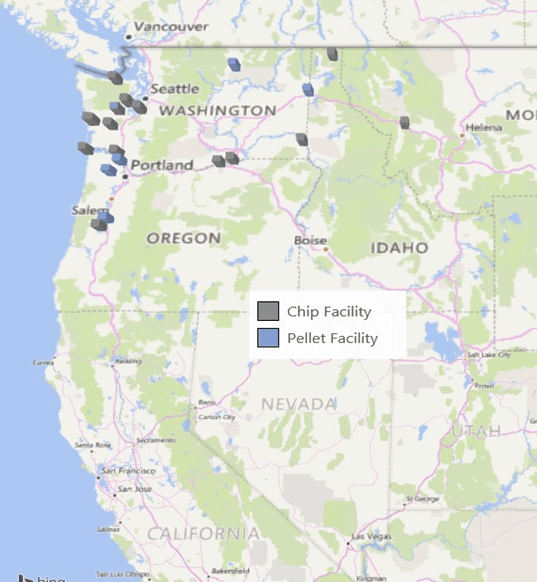
You’ve gotta love this business. In 1980 at the Fifth North American Forest Biology Workshop, I remember a fellow geneticist talking about how climate change was going to cause trees to die out because they couldn’t move north due to uninhabitable spaces for them compared to post-glaciation (say fields instead of forests in the Midwest). That was 40 years ago. I remember so clearly because I remember thinking “but we didn’t have pick-up trucks then and seeds could fall into the back, and get moved across those spaces.” And that’s if we didn’t intentionally move them across spaces and plant them, something people are thinking about and now doing.
Here we are in 2019 and here is an article in the NY Times about moving tree species north, now called “assisted migration.” It’s pretty interesting. Here are a few quotes.
As a cautionary tale, Mr. Riely looks to the forest collapse that struck near Denver some years back. Conditions in the Rockies differ substantially from those in Rhode Island; still, he calls it “a water supplier’s nightmare.”
In the 1990s, dry spells, insects and disease began killing trees there. In 1996 and 2002, ferocious fires tore through. Then the rains came. Flash floods carried dark, ash-filled silt and debris into Denver’s reservoirs, clogging them.
So in 2010, Denver Water began replanting the mountainsides, making the forest more drought-resistant by spacing trees farther apart and reducing competition for water. Opening the forest canopy allowed other kinds of plants, which also prevent erosion, to grow as well.
I’m not sure I would agree that the forest “collapsed” prior to say, the Hayman Fire. But it certainly makes sense to plant trees farther apart in conditions where other trees are unlikely to fill in, and otherwise planted ones might need to be thinned at some point in the future. I wonder about the idea of “opening the forest canopy” after Hayman, as it was and is pretty open in a lot of places. Like there are no living trees. See the photo above.
Another interesting thing about this article is that it talks about moving species, and planting species in different microclimates, but not much about using different genetic sources of the same species. That approach would possibly have less disruptive effects on associated organisms in the area. As the concern is mentioned in the story:
Some worry about the unintended consequences of shuffling plants and animals around and that the approach will become widely adopted. “Moving species is the equivalent of ecological gambling,” said Anthony Ricciardi, a professor of invasion ecology and environmental science at McGill University in Montreal. “You’re spinning the roulette wheel.”
In the world of forest genetics, there have been many plantings of different seed sources through time in different places. The last I heard, people were taking advantage of this knowledge where it is available in terms of moving sources. I also remember the effort to grow eucalypts in Florida for biomass (pre-energy) and the hundred year freezes that knocked them out in the 80’s.. Here’s a link to the history by Don Rockwood at the University of Floriday. You can argue that eucs are a different beast because they’re not from North America but still…things can grow well for a while and then.. not so much.
Matching Eucalyptus species to Florida’s diverse weather and soils is challenging. Historically defined climatic regions based on average low temperatures or numbers of freezes provide some broad guidelines, but annual aberrations such as the three 100-year freezes in the 1980s [11], extended cold periods of the 2010-11 winter, and the abrupt freezes of the “warm” winter of 2011-12 profoundly influence freeze susceptibility of all young eucalypts. Rainfall patterns with unpredictable, extended dry spells make Florida’s summer rainfall climate highly variable and difficult for successful planting and early growth.
Finally, I think it’s important to note that worrisome invasive tree pests continue to be imported and expand in the US. So you’ve got unpredictability of different kinds (and climate and pests can interact) over a period of a tree’s lifespan (a hundred years or more). I can see why people might try some things, or wait and see.







